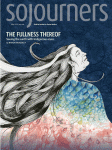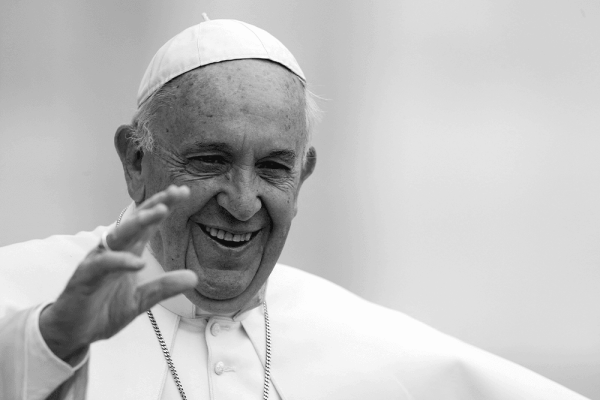CHANGE YOUR LENSES, please. Okay, maybe you can’t simply change lenses right now, but would you at least notice the lenses you are currently wearing? If you are like, say, 99.9 percent of us in the U.S., you have been influenced by a very particular set of perspectives that interpret life from an Enlightenment-bound Western worldview.
All of our lenses have various perspectival tints, but Western worldviews seem to have several in common, including the foundational influence of Platonic dualism, inherited from the Greeks. This particular influence absolutizes the realm of the abstract (spirit, soul, mind) and reduces the importance of the concrete realm (earth, body, material), disengaging them from one another. In dualistic thinking, we are no longer an existing whole.
Western worldviews tend to have other related assumptions—such as hierarchy, extrinsic categorization, individualism, patriarchy, utopianism, racism, triumphalism, religious intolerance, greed, and anthropocentrism. But the influence of dualism empowers these other concerns.
What difference would it make if life were viewed instead as a fundamental whole, if the earth itself were seen as spiritual? And how would such a worldview square with Jesus’ approach to such matters?
A few encouraging facts as we approach these questions:
- Most of the rest of the world does not understand life through a Western worldview. We in the West are the anomaly.
- Jesus was not an Enlightenment-bound Western thinker. He thought more like today’s premodern Indigenous people.
- Not one writer of the scriptures saw life through a Western lens.
- Indigenous Peoples of the world have an advantage over Western thinkers in that there is still enough premodern worldview intact among North American and other Indigenous people to relate to the premodern Jesus and the premodern scriptures. They can bring new kinds of hope to today’s earth climate crisis, if we allow it.
Jesus understood humanity’s relationship with the earth differently than we do. He spoke to the wind, to the water, and to trees; closely observed the habits of birds, flowers, and animals; and called his disciples to model their lives after what they saw in nature. In Matthew 5, during his Sermon on the Mount, Jesus said, “Do not say, ‘By heaven!’ because heaven is God’s throne. And do not say, ‘By the earth!’ because the earth is his footstool” (34b-35a).
Jesus was making a point about making vows, but one of the many byproducts we see from this short exchange (and from his whole life) is Jesus’ view of the whole world, including earth and heaven, as sacred. Jesus understood the balance between the earthly and the heavenly realms, and he certainly understood the relatedness of both (“on earth as it is in heaven”). Jesus was firmly planted in the construct that “the earth is the Lord’s and all that is in it.”
The predominant themes and subject matter of Jesus’ stories were natural, such as fish, flowers, birds, sheep, oxen, foxes, earth, trees, seeds, harvests, and water. There were many mechanical inventions during Jesus’ time, but the record reflects he paid little attention to them. His was a world of keen observation, where God was wondrously alive and at work in creation.
In Jesus’ worldview, he laid to waste the fallacies of Platonic dualism that exist in our modern era and that presume the earth or the body or anything earthly is less spiritual than the mind, the spirit, or things more abstract. To Jesus, as it should be to us, the earth is wholly spiritual, as are our bodies.
Earth out of balance
If we remove the influence of Platonic dualism from our worldviews, we will find it difficult to view human beings as being over all other parts of creation. Instead of a relationship where nature is below us, we should be stewarding with, or co-sustaining, all creation.
Each area of creation is working with the Creator to maintain earth’s balance. The rain and snow, oceans and sun all sustain life on earth. Animals regulate each other within their various natural cycles. Plants provide oxygen, food, and shelter for all of creation to coexist together. As human beings, we are co-sustainers with the rest of creation to ensure the abundant life for all creation the Creator intended. And God said that is good.
When considering our relationship to the earth, Christians will recognize that Jesus is earth’s creator and sustainer (John 1, Colossians 1, Hebrews 1), and we simply cooperate with him in these tasks. Our job, as humans and as Christians, is to maintain the natural balance God set forth through Christ.
Unfortunately, things are out of balance. By allowing past and current exploitation of the earth and earth’s resources, we are now reaping the consequences via the current climate catastrophes. Earth’s topsoil is disappearing; coral reefs are dying; glaciers are melting; aquifers are not being recharged; animal, bird, fish, and plant species are dying at exponential rates. We are experiencing a steadily increasing amount of severe weather patterns through hurricanes, flooding, tornadoes, forest fires, landslides, droughts, and snowstorms—and the costs of these disasters continue to rise progressively each year, into the hundreds of billions of dollars. Earth is out of balance, and as a result all God’s creation is in peril.
The road to restoration
Christians have evaded the responsibility of earth-care, due largely to the adoption and influence of a worldly philosophy. By ignoring the earth’s problems, are we not responsible for dismissing the things important to Jesus in favor of our own selfish interests?
Indigenous Peoples have historically been condemned because we view our relationship with the earth to be very sacred. Like Jesus, Indigenous Peoples understand their relationship with creation as paramount to the abundant life God intends for all humanity. In other words, to be human is to care for creation. If we want to live our lives together in abundance and harmony, and if we want future generations to live their lives together this way, we must realize we are all on a journey together with Christ to heal our world. Earth healing will take cooperation from all of us to solve the problems.
The single conceptual integration of land, history, religion, and culture may be difficult for many Western minds to embrace. For Indigenous Peoples, this integration is often explained as a visceral “knowing,” or as somehow embedded in our DNA.
This feeling we have of ourselves as a people, including our history and cultures, being connected to the land is perhaps the single most glaring difference between an Indigenous Native North American worldview and a Euro-Western worldview. But if we are all to survive the 21st century, things must change so that our Euro-Western friends can sense a similar connection. How does such a paradigm shift happen?
A worldview both Indigenous and biblical
Christians cannot merely leave such matters in the hands of well-meaning secular environmentalists. Although everyone should be deeply indebted to those on the frontlines of the environmental movement, many current initiatives are only helpful in the short run, because they focus on preserving earth and water for a particular use.
Unless there are guiding values that become rooted in a familial love of creation, these short-term initiatives simply may represent a more sanitized version of utilitarianism: using the earth without deeply loving the earth as sacred creation. Utilitarianism (using the earth out of self-interest, for good or bad) has been, in part, the problem.
This is where Indigenous people can be helpful. Many Indigenous Peoples understand:
- Creation exists because of a Creator.
- Life is intrinsically valuable because it is a gift from the Creator and, therefore, it is sacred, meaning that sacred purpose is crucial to our existence.
- The role of human beings is unique, and humans relate to the rest of creation uniquely. This includes restoring harmony through gratitude, reciprocity, and ceremony between the Creator, humans, and all other parts of creation.
- Creation does not exist to be ignored in isolation, but creation is the Creator’s first discourse in which humanity has a seat of learning and in which the discourse is continuous.
- Harmony is not simply understood as a philosophical idea; it is about how life operates and the only way that abundant life can continue, if life is to be lived as the Creator intends.
We are now at a point in human history when we must realize that the Industrial Age has written a check to our world that has insufficient funds. Only a worldview encompassing the interconnectedness between Creator, human beings, and the rest of creation as one family will sustain abundant life.
Such a worldview is fundamentally both Indigenous and biblical. If we are wise, we will protect Christ’s creation, for this creation is central to God’s investment in us.
The rights of nature
There are a number of obstacles that the Western world and worldview will need to clear in order to rebalance and preserve creation, but there is one great and relatively timely action that could move us quickly down the road to restoration: We can pass laws to protect Christ’s creation—not just because of the current climate crisis but because we love what God loves and we want to understand the world more like Jesus, earth’s creator and sustainer.
Following the lead of Indigenous people’s movements around the world, we can enact laws and constitutional amendments to protect the earth, as did Ecuador and Bolivia. More than three dozen U.S. municipalities have adopted similar “rights of nature” laws and regulations, including Pittsburgh, the largest U.S. city to do so.
Bolivia’s “Rights of Mother Earth,” as it is sometimes called, grew out of the World People’s Conference on Climate Change held in Cochabamba, Bolivia, in April 2010. At that conference, more than 35,000 people from 140 nations adopted the Universal Declaration of the Rights of Mother Earth. (You can find more on the rights of nature movement at The RightsofNature.org.)
Bolivia is one of many countries struggling to deal with the climate crisis and its weather anomalies, such as rising temperatures, melting glaciers, numerous floods, droughts, and mudslides. Bolivia, like many other nations, is a battleground country between the rights of Indigenous peoples, especially landless peoples, and a corrupt corporate state, similar to the situation in the U.S., where corporations are legally protected “persons” but the earth that supports them has no real voice or rights.
To remind us of our intimate connection with creation and to break dualistic thinking, “action” must become an important word in Western people’s vocabulary. Euro-Western people might also consider developing new ways of expressing their thanks through outdoor, earth-honoring ceremony. Through expressing gratitude in ceremony, Indigenous Peoples reveal to others and themselves the connection between Creator, human beings, the earth, and all the rest of creation.
A foundation of Native American ceremony is gratitude for the relationships that exist. Euro-Western people can rediscover what their Indigenous ancestors once knew and, in so many ways, reclaim some of their Indigeneity once again. To move ahead—perhaps simply to survive—we must all be connected to Christ’s creation in harmony.
Throughout the gospels Jesus gave creation a voice. We should do the same. Would you ask your spouse to remain silent or ask them to not make their needs known? We are in a relationship with the earth and all of earth’s creatures. We must make the earth’s voice known and protect it by recognizing the earth’s rights. Unfortunately, we have waited until this late hour to realize the sacredness of this relationship. Let’s not delay until it is too late. Jesus is waiting.

Got something to say about what you're reading? We value your feedback!







